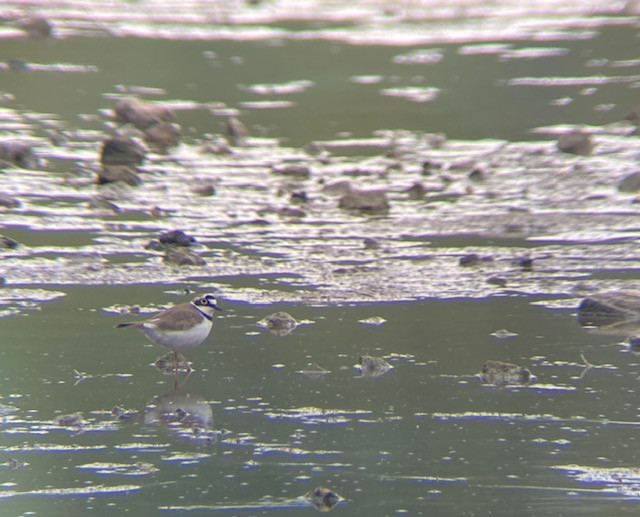Description
The Hooge Kampse Plas is a former sand extraction pit. The lake has been made shallower and also has shallow banks. Some islands have also been created. There is a cycling and walking path on the west side of the lake. The many water birds on the lake can be viewed well from the path. The Hooge Kampse Plas and the immediate surroundings have a variety of biotopes. In the spring, the pool is a magnet for the first swallows of the year. Dvergmáfur come in the spring to forage on the lake in their hundreds. Birds such as Straumerla, Gáshaukur, Dómpápi, Spésöngvari, Grænspæta, Bakkasvala and Bláþyrill can be seen near the lake. In the surrounding grasslands you can also find Stelkur and Jaðrakan. Most birds can be seen at the lake in winter. You can then see birds such as Keldusvín, swans, geese and 10 species of ducks. Especially in cold winters, many more birds are seen on the lake because the large body of water freezes over less quickly than surrounding waters.
_________________________
Nederlands: De Hooge Kampse Plas is een voormalige zandwinput die is ingericht als natuurgebied. De plas is ondieper gemaakt en heeft flauwe oevers gekregen. Tevens zijn enkele langgerekte eilandjes aangelegd. Het water met de omringende oevers wordt beheerd door het Utrechts Landschap. Het is onderdeel van de Ecologische Verbindingszone Oostbroek - Hollandsche Rading tussen het Kromme Rijngebied, de Utrechtse Heuvelrug en het veenweidegebied. Aan de westzijde van de plas loopt een fiets- en wandelpad. Vanaf het pad zijn de vele watervogels op de plas goed te bekijken.
De Hooge Kampse Plas en de directe omgeving heeft een de verscheidenheid aan biotopen. In het voorjaar is de plas een magneet voor de eerste zwaluwen van het jaar. Dwergmeeuwen komen in het voorjaar met honderden tegelijk op de plas foerageren. Vogels als grote gele kwikstaart, havik, goudvink, spotvogel, groene specht, oeverzwaluw en ijsvogel kunnen bij de plas gezien worden. In de omringende graslanden kun je tureluur en grutto aantreffen. In de winter zijn er de meeste vogels te zien. Je kunt dan vogels als waterral, zwanen, ganzen en wel 10 soorten eenden zien. Vooral in koude winters worden veel meer vogels op de plas gezien omdat de grote watermassa minder snel dichtvriest dan omliggende wateren.
Details
Access
There is a walking and cycling path along the west side of the Hooge Kampse Plas. Entrance: Hooge Kampse Plas: Groenekanseweg / Voordorpse Dijk Groenekan. The adjacent Polder Voordorp is not open to the public.
_________________________
Nederlands: Langs de westkant van de Hooge Kampse Plas ligt een wandel- en fietspad (Hooge Kampse Pad: van Fort Voordorp naar de Groenekanseweg). Ingang: Hooge Kampse Plas: Groenekanseweg/Voordorpse Dijk Groenekan. De aangrenzende Polder Voordorp is niet toegankelijk voor publiek.




